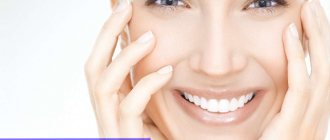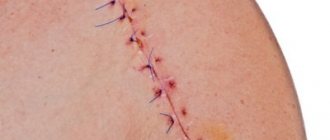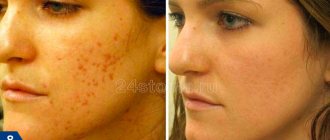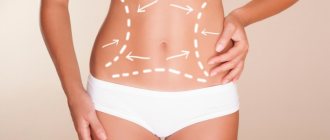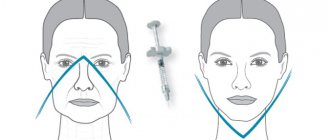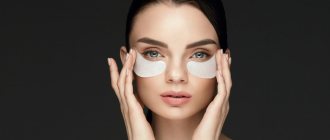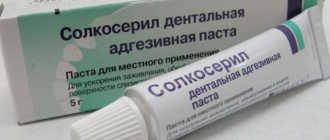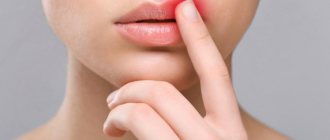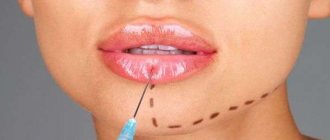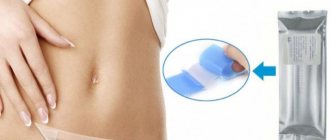Acne is quite a painful condition and also makes you feel self-conscious. The situation can get worse and acne usually leaves scars that can be a nuisance for life! And no one needs holes on the face after acne. Don't worry, today we will tell you about home remedies that will help you get rid of acne scars forever. Read on to find out more.
Why do acne scars appear?
In simple terms, a certain space forms at the site of the pimple, which is gradually filled with connective tissue. In this way, the body takes care of its own integrity, completely disregarding the aesthetic side of the issue. Dermatologists and cosmetologists identify several possible causes of acne scars:
- Mechanical squeezing of pimples and/or blackheads. With such exposure, the skin will certainly be damaged, its healing may take an indefinite period of time, which provokes the formation of scars.
- Prolonged acne without proper treatment. It is accompanied by disruption of the sebaceous glands, clogging of pores with their secretions, and the spread of the inflammatory process. As a result, numerous pustules form on the skin, which are a traumatic factor.
It is not at all necessary that scars will be formed only with prolonged acne or squeezing out pimples. Scars often appear even with single rashes - it all depends on the type of skin, the general state of human health, and the level of functionality of internal organs and systems.
We recommend reading about laser acne treatment. You will learn about indications and contraindications for acne laser treatment, types of laser for acne therapy, skin care after the procedure, and cost. Read more about scar mesotherapy here.
Important tips and prevention
Cosmetologists gave a number of tips on the topic of preventing the occurrence of scars on the face :
- In the first minute after a skin injury, the wound should be treated with a 3% hydrogen peroxide solution.
- It is recommended to cover the wound with a plaster that does not stick to the wound.
- Don't forget to treat with antibacterial ointment.
- It is forbidden to squeeze pimples (especially with dirty hands!).
- It is advisable to eat foods rich in vitamin E every day.
- To avoid scarring, it is recommended to completely cure acne.
Kinds
In medicine, there are three types of acne scars, which will “dictate” the solution to the problem.
Atrophic
This is the most common type of scar that forms after acne. They look like pits and tubercles, formed by connective tissue, which grows to a small extent at the site of deformation of the skin.
A distinctive feature of atrophic scars after acne is that they do not grow, do not change over the years (do not become deeper).
Keloid
The connective tissue at the site of pimples and blackheads grows excessively, which leads to the formation of rather voluminous, convex scars. They are often irregular in shape and red or purple in color.
Keloid scars can grow not only in specific locations of pimples/acne, but also involve healthy skin tissue close to the site of pathology.
Normotrophic
This is the “safest” type of scar, as it consists of fairly elastic, thin connective tissue. The appearance of such scars does not deteriorate much, since the lesions are pale in color and practically merge with the main background.
Normotrophic scars are a normal reaction of the skin to injury.
Hypertrophic
Scars of this type are located above the level of the skin and are a consequence of excess collagen production. These excesses do not have time to dissolve, which leads to the formation of a scar.
The doctor will be able to accurately determine the type of scar after acne; based on the results of the examination, he will prescribe treatment.
Types of scars after acne
Effective facial ointments for the effects of acne
For many, the solution to scars after acne and acne involves turning to plastic surgeons or hardware cosmetology. But doctors say that with regular use, pharmaceutical ointments will get rid of scars or make them less noticeable. There are several effective drugs:
- Contratubeks . The ointment contains several components, which together provide accelerated exfoliation of epidermal particles and stop the growth of connective tissue cells. The drug is especially effective for normotrophic scars; it can be used as a prophylactic agent at the risk of keloid and hypertrophic scars.
Contratubeks is applied locally, rubbed directly into the scar twice a day. The duration of therapy is 30 days, further treatment is prescribed by the doctor based on the results of previous procedures.
- Fermenkol . The product contains animal enzymes that are responsible for the normal functioning of their digestive system. These substances have the ability to break down collagen fibers, which makes the formation of connective tissue impossible. Most often, this ointment is used for physiotherapy. In particular, it demonstrates particular effectiveness when performing electrophoresis.
Fermenkol set for scars and a device for electrophoresis Elfor
It is strictly not recommended to use Fermenkol on your own! The appointment must be made by a dermatologist/cosmetologist, who will also determine the number of procedures and the total duration of the course of treatment.
- Zinc, synthomycin and salicylic ointments. These three drugs are especially popular because they combine two positive aspects - high efficiency and low cost. Regular use of the drugs ensures exfoliation of epidermal particles, normalization of metabolic processes in the skin and lightening them. Ointments have a comprehensive effect on the lesion and can eliminate all traces of post-acne.
Zinc, salicylic and syntomycin ointments are used in the same way: they are applied in a fairly thick layer to the scars, and after 50 - 60 minutes they are washed off with warm water. The course of therapy is unlimited, usually procedures are performed twice a day until the desired result is obtained.
- Dermatix . This ointment does not belong to the medicinal category; doctors recommend it to those patients who already have scars with a high risk of turning into hypertrophic and keloid scars. When applied to the problem area, the drug forms a film on the surface, which is designed to protect the scar from external factors.
Dermatix should be applied every day in a thin layer, preferably in the morning. Whether acne scars will disappear is a controversial issue, but the formation of other, more durable and “gnarly” scars will be stopped.
To learn how the drug Collost is administered for the treatment of post-acne scars, watch this video:
Principles for choosing a removal method
Acne scars remain for life not only in the face, but also on the skin of the upper chest, on the back and, often, in the shoulder girdle. This complication often disfigures the affected areas and causes patients, especially women, no less trouble than the active course of acne itself. In many cases, it requires expensive treatment, which, unfortunately, is not always effective enough or is not effective at all.
In order to remove acne scars, dermatologists, cosmetologists, plastic surgeons and pharmacologists offer various methods and remedies, since scarring is often accompanied by inflammatory acne and is a borderline problem between these specialties. The choice of treatment is influenced by the types of scars, their nature, age and location.
Acne scars develop from granulation tissues that transform into connective tissue structures. They change the skin relief due to the alignment of the boundaries between the epidermal layers and the dermis due to the disappearance of the outgrowths of the epithelial layer between the papillae and the area of the papillary layer of the dermis itself. In the latter, the elastic fibers are destroyed and their place is taken by coarse fibrous collagen fibers. There is also deformation and a decrease in the number of blood and lymphatic vessels, sweat and sebaceous glands.
It is impossible to completely get rid of the effects of acne and cure acne scars, but making these cosmetic defects almost invisible using existing drugs and techniques is quite possible.
The shape of the scars can be linear, V- or U-shaped, star-shaped, etc., which depends on the nature of the damage. In the early stages they have a pinkish color with a somewhat bluish tint. After a certain time, the scars become whitish (depigmented) or, conversely, excessively pigmented. Scar tissue, when palpated, can be tightly fused to the underlying tissues or freely move to the sides.
The main choice of how to remove acne scars is determined by their type. According to the classification, there are four types of scars:
- normotrophic, the surface of which is smooth, without a skin pattern. They do not protrude above the surface of the surrounding skin. These acne scars are the easiest to remove;
- atrophic - as a rule, these scars are smooth, whitish and thin, resembling tissue paper and gathering into small folds when pressed on them; often their surface is located below the level of the surrounding skin and resembles depressions of various shapes and sizes;
- hypertrophic, caused by the formation of a small number of coarse collagen fibers and sharply protruding above the surface of the skin; scars are not prone to growth, unlike keloid scars, and have different colors - from pale pink to purple-bluish;
- keloid - rough scars that deform the skin, characterized by a large number of collagen fibers and a significant amount of acidic mucopolysaccharides with a gel-like consistency; often they spread beyond the source of the initial damage. It is the most difficult to remove such acne defects.
The risk of developing hypertrophic and keloid scars from acne, burns or wounds is greatest in areas of constant skin tension in places where it is located directly above bony protrusions or characteristic of other anatomical features - these are the areas of the mandibular angles, earlobes, the upper back and sternum, and the shoulder girdle area.
How to remove scars and scars using mesotherapy
This type of cosmetic procedure involves injections of vitamins, amino acids and other substances. The essence of the method: the mesotherapy drug fills any “gaps/pits/cracks” in the epidermis, which causes visual smoothing of the surface of the skin. At the same time as this “hiding”, the active substances of the drug have a beneficial effect on the condition of the skin - they saturate it with vitamins, make it firmer and more elastic, and correct the color.
The advantage of mesotherapy in the fight against scars is obtaining a quick, almost instant result. But the effect will not last long - after a maximum of six months you will have to repeat the injections, which can be attributed to the disadvantages of the method.
Mesotherapy has a large number of contraindications, so before starting treatment for post-acne conditions, you need to consult a doctor. For example, if there are keloid scars, then the administration of corticosteroid drugs will be required, and they are prohibited for some diseases.
Just getting rid of acne scars on your face is not enough. Removing red spots
The first thing we offer after working with scars is a course of biorevitalization with 3% hyaluronic acid. This procedure very well lightens stagnant spots and evens out skin tone.
Finally, after six months or even a year, the time for the laser comes. The fact that we raised the bottom of the scar almost to the level of healthy skin will save it from aggressive resurfacing. Surface or medium grinding will be sufficient.
Please note that it is not the scar that is polished, but the skin surrounding it: as a result, it partially lowers to the level of the scar. The skin is evened out.
Which peeling is better
In general, the peeling procedure is considered one of the most effective in the process of eliminating scars and acne scars. Cosmetologists know several types of such procedures, but if we consider them specifically in relation to the post-acne condition, it is worth highlighting the following:
- Deep phenolic peeling . This is a rather painful and aggressive procedure; phenol acts not only on the surface of the skin, but also penetrates into the deeper layers of the dermis. To visually hide the presence of scars, only 1 procedure is required. Rehabilitation will last 2 weeks, but this method can even get rid of deep keloid scars.
Disadvantages include soreness and increased pigmentation of the skin during the recovery period.
- Medium chemical peeling . The procedure is carried out using salicylic, trichloroacetic or glycolic acids. These substances actively exfoliate the already pathologically altered epidermis, while simultaneously having a stimulating effect on the regenerative abilities of the body. As a result, the connective tissue is replaced by a healthy, normal epidermis.
To get rid of scars, you will need to undergo at least 5 procedures with an interval of 10 - 14 days.
Video:
Laser scar modeling with a fractional erbium laser (laser dermabrasion). The procedure removes scars, “craters” of pores on the skin, and any consequences of post-acne. It is performed under anesthesia; the age of the scars does not matter.
Maria's review:
“When I was young, I suffered a lot from acne. They passed, but by the age of 25 my face had turned into one endless scar. Without exaggeration, white and red scars were piled one on top of the other.
Those who know will understand: even just to leave the house you need to carefully apply concealer, foundation and powder, but as a result you look no better than a young old woman.
There is no quick way to remove acne scars. Unlike acne, they do not go away on their own. Dealing with scars turned out to be more difficult than acne. I burned them out with chemical peels and with a laser - it helped, but I was not able to completely get rid of acne scars.
What I have after a year and a half of treatment with Vasilyev Maxim is very similar to a miracle - there are almost no signs of acne visible, the skin is smooth and beautiful.
How much patience a doctor must have who works for so long with such jeweler precision and brings the work to perfection. Thank you"!
Laser removal of acne effects
This method of dealing with scars and scars after acne and acne is considered the most effective; it can solve the problem of even hypertrophic “marks”. The laser burns scar tissue and activates the regeneration of epidermal cells.
To obtain the desired result, you will need to do 3 - 5 procedures with an interval of 60 - 90 days. A more precise amount of laser exposure will be determined by a specialist, since much depends on the “age” of the scar, the level of elasticity of the skin and the general health of the patient.
Laser removal of acne is a painful procedure and is therefore performed under local anesthesia. If the pain threshold is too low, the patient will be offered general anesthesia. The rehabilitation time after each treatment is at least 2 weeks, but it is possible to get rid of even “ancient” scars.
Using the Dermapen device or mesoscooter –
Dermapen works great where there is “minus tissue”, i.e. with atrophic scars. This is a fractional device that, using the mechanical movements of a nozzle with needles, causes microdamage to the skin. And the skin naturally reacts to damage by regeneration, i.e. collagen synthesis is stimulated. Depending on the number, depth and type of atrophic scars, the course of treatment may require from 3 to 6-8 procedures.
The first results can be seen 6-8 weeks after the first procedure, and the final result can be assessed only 3 months after the last procedure. The same applies to any other methods (for example, laser resurfacing). This is due to the fact that stimulation of collagen production in response to skin damage is delayed in time and increases gradually.
Dermapen: before and after photos
The mesoscooter is a cheaper alternative to the Dermapen device. It works on the same principle - it leaves microdamages in the skin, but the damage is no longer applied strictly vertically, but at a changing angle (since the mesoscooter drum with needles rotates). This is not very good and can lead to roughening of the skin due to the production of abnormal scar collagen. Below you can see photos before and after 3 procedures performed at an interval of 4 weeks.
Mesoscooter: before and after photos
How to increase the effectiveness of these methods -
The effectiveness of using a dermapen or mesoscooter can be increased if you undergo special training. Clinical studies have shown that if the patient used topical retinoids for at least 1 month (optimally 2-3 months), the effectiveness of the method increased significantly. As retinoids you can use: products with pure retinol (at least 0.3-0.4% and up to 1%), as well as tretinoin 0.025%.
Products with the L-form of ascorbic acid with a concentration of 15% (instead of retinoids) can also be used, because they also stimulate collagen production in the skin. Another preparation option is injection mesotherapy in a cosmetologist’s office. In this case, several procedures are first carried out using nucleotides (DNA-RNA complexes) - an excellent Italian drug for this is “Plinest”. After this, several injection procedures with complexes containing matrikin peptides (they stimulate collagen production).
After such an injection preparation of 4-6 procedures, we move on to the dermapen or mesoscooter itself. We hope that our article: How to get rid of acne spots, acne scars and chickenpox was useful to you!
Sources:
1. Textbook of dermatology “Fitzpatrick's Dermatology” (8th edition), 2. American Academy of Dermatology (USA), 3. National Library of Medicine (USA), 4. “Cosmetic dermatology” (Bauman L.). 5. Clinical studies published at https://www.ncbi.nlm.nih.gov/.
Other cosmetic procedures
Some clinics may offer other procedures that can get rid of the problem in question. These include:
- Fractional photothermolysis . This is a laser procedure that differs from the usual one in that it affects the skin not with a single beam/spot, but with scattering rays. Fractional photothermolysis allows you to solve the problem of not only scars, but also other consequences of acne and blackheads - increased pigmentation, too open pores.
Typically, a course of therapy with this method is 5 procedures, between which there should be a gap of 10 days. Rehabilitation is 3 days.
- Dermabrasion . This is a mechanical procedure that involves applying special brushes to the surface of the skin. By friction, the scar tissue is abraded, the scars are leveled into the same plane as the cover and become less noticeable. Dermabrasion is not one of the most effective procedures, but it helps solve the problem of “fresh” acne and blackheads.
- Ozone therapy . Medical ozone is injected under the skin of the face, which accelerates the healing of wounds and relieves inflammation. It will take 5 - 6 procedures, in some cases this number can increase to 10 - 15. In any case, ozone therapy requires long-term use and additional correction.
How to treat acne scars
- Orange peel powder
- Coconut oil
- Bizan
- Tea tree oil
- Apple vinegar
- Aloe vera
- Baking soda
- Lemon juice
- Castor oil
- Turmeric
- Vitamins
- Potato
- Cocoa butter
- Honey mask
- Pink water
- Garlic
- Almond oil
- Oatmeal mask
- Ginger
- Egg whites
- Green tea
- Epsomatic salt
- Nim
- Avocado face mask
Treatment of scars with surgery
Full-fledged surgical intervention for post-acne conditions is performed extremely rarely, for example, in the absence of results after cosmetic procedures or too extensive lesions of the facial skin. Doctors can offer three options for surgical treatment of acne scars:
- Undercutting (subsidy). An already formed scar is separated from the skin with a scalpel. In the resulting wound, blood and lymph accumulate, they form connective tissue, which is almost invisible. Often, undercutting is combined with laser resurfacing, then the result will be excellent - the skin will become smooth and even.
- Excision. The doctor simply excises the scar/scar and then applies cosmetic stitches. In most cases, new, small scars form at the site of such intervention, which are removed with a laser.
- Skin grafting. This is a radical way to combat scars and acne scars, which involves transplanting individual areas of the skin. Typically, such treatment is used for burns; in the case of the problem under consideration, it is inappropriate, as it can lead to serious complications.
For post-acne treatment, watch this video:
